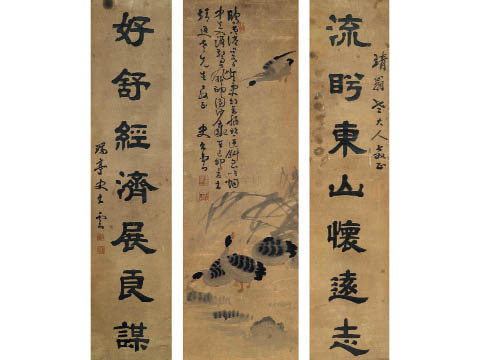Love of Chinese Language Expressed in Couplets
China Today, December 23, 2016 Adjust font size:
THE traditional Chinese couplet is an artistic combination of poetry and calligraphy. A couplet, as the Chinese – yinglian or duilian – for this duo implies, is composed of a pair (fu) of antithetical lines of poetry that are inscribed on strips of paper pasted to the door jambs (ying) either side of a house entrance, or engraved on a plaque and hung above it. The two lines follow specific syntactic rules: They have the same number of characters, an identical meter, and inverse tone patterns where the meaning of every two corresponding characters is related. They are written, in ancient Chinese style, from right to left in vertical columns.

The Chinese couplet is an artistic combination of poetry and calligraphy.
Succinct but imbued with luminary ideas and executed in flowing calligraphy, the couplet is a unique form of classical Chinese art and literature which is shared by countries that have historical and cultural ties with China, such as Vietnam, Korea, Japan, and Singapore. The couplet was recognized as China’s national intangible cultural heritage in 2006.